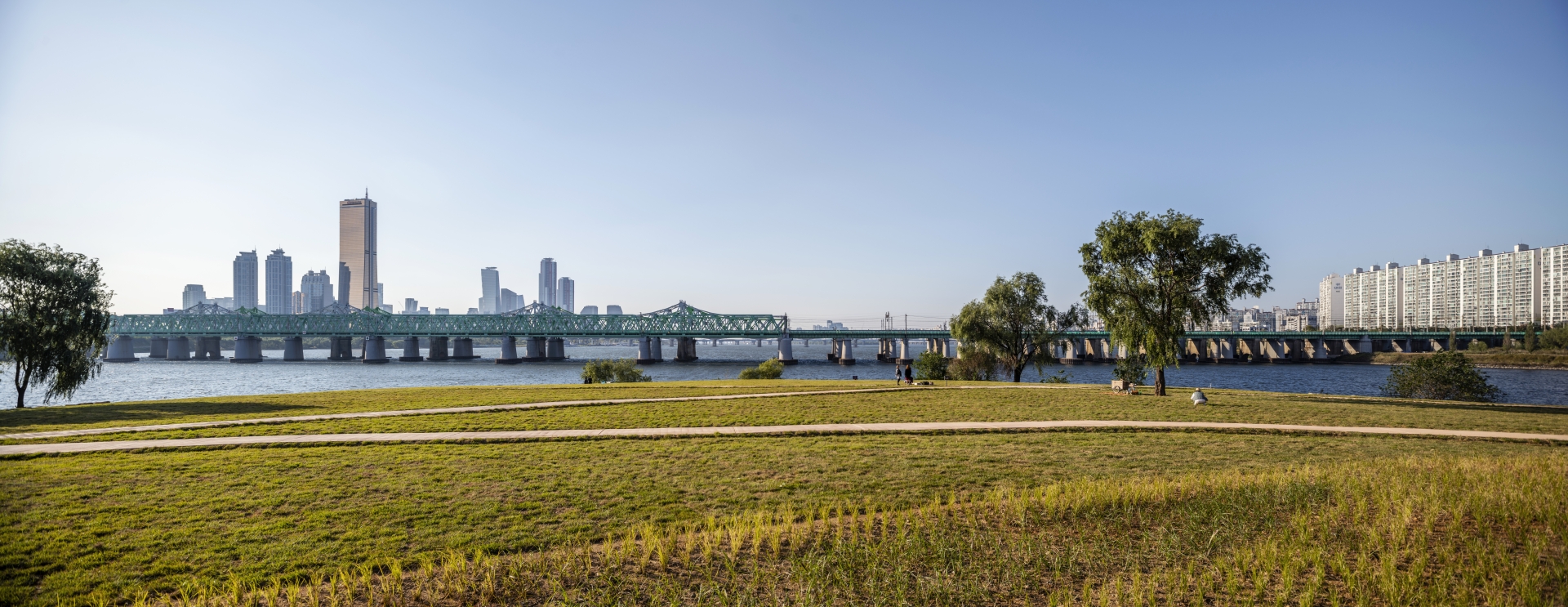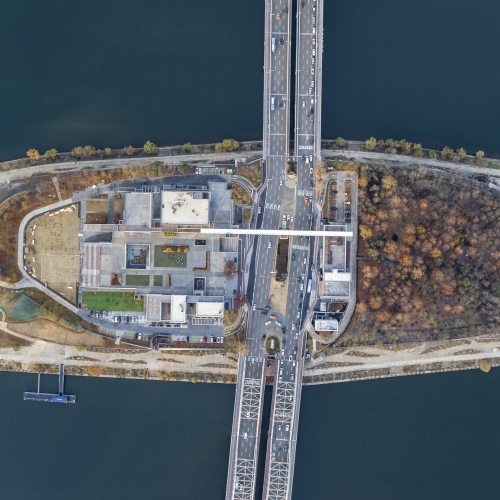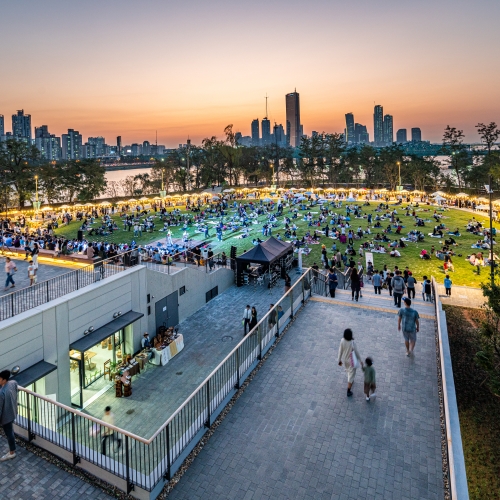‘The operation program will be decided in light of the best proposal of operation planning, the building will be built in accordance with its motions, and the individual who proposed the plan will be put in charge of its operator.’
The above was the statement of intent delivered at the Nodeul Dream Island design competition▼1 in June 2015. In January 2017, Seoul Metropolitan Government (SMG) acknowledged that this direction could not be realised, announcing that a party selected via Entrustment to Private Sector would be put in charge of its operation instead. It means that the winner of the competition had to give up the position of priority negotiator.
With this, it seemed as though the dream of Nodeul Dream Island was going to end in failure. When Nodeul Island finally opened in September 2019, after four years of preparations, however, the operator was none other than that same winner of the competition. What kind of trials and tribulations did Nodeul Island have to undergo during the past four years, as it complied with the changes in the direction of the competition and in its development methods, seeking ‘operation planning and operation first, design and spacelfacility construction later’? And if all these events amounted to anything, what were they? To answer these questions, one may look into the creation process of Nodeul Island from the aspect of placemaking planning.
The Island Planning Begins: Asking ‘How Will it be Used’ before ‘What Should Be Made’
The Nodeul Dream Island Project was sparked by the contemplation of how the space will be filled and by whom it should be managed before its construction. The project was set in motion in an unprecedented manner, by inviting participants publicly. What makes a ‘space’ a ‘place’? One answer is ‘placemaking planning’, of which the initial phase begins by asking the question, what kind of meaning and experience is presented to its visitors through this ‘place’. Placemaking planning covers more specific issues, involving non-physical elements and not merely adding a human narrative to a physical space. Hence, Placemaking planning is also often described as a task of breathing content into a space. A ‘place’ that emerges through ‘placemaking planning’ is like an ‘organism’ that needs to wriggle and move continuously.
While physical space as architecture can capture the eye through its own merits, a space without a ‘narrative’ is only a ‘space’ and doesn’t deserve to be called as a ‘place’. In order for it to become a living organism, it needs constant supervision. We call this activity ‘placemaking’. Nodeul Dream Island Project began with an emphasis on the importance of ‘operation program’ and ‘placemaking’. During this procedure, various teams came together to share their ideas. The team noted as finalists in the competition was the ‘BAND of NODEUL’, which was composed of eight different specialists with ‘Urban Transformer’ at the centre and was the party responsible for spatial planning. With a vision for a cultural complex designed for music, BAND of NODEUL submitted the plan of operation concept – placemaking concept – for the project and proposed its role as a catalyst to bring people of various fields together. The team emphasised the fact that the island is the sole remaining possibility for accommodating a cultural space around the Han River, of which public spaces disappeared in the course of the river development project during modernisation. At this place, the team proposed their plans for layout in which various cultural disciplines might intermingle with music.
Protecting the Island: The Institutional Obstacle of the Nodeul Dream Island Competition
The finalist to the competition for Nodeul Dream Island (2nd Phase) – the operation planning competition – is faced with a reality known as the ‘Entrustment of Administrative Works to Private Sector’, an institutional tool used to secure the official position of the ‘operator’. In fact, at the point of initiating the competition, SMG already offered its review that through ‘negotiated contracts’ under the other Entrustment existed, the government could execute a contract with the finalist as the entrusted party for administrative works. After the operation planning competition, however, the institutional premise that made this possible – i.e., the Enforcement Decree of the ‘Public Property and Commodity Management Act’, and along with it, the protocols for the Entrustment of Administrative Works to Private Sector – had been amended, and it was no longer possible for SMG to sign the contract with the finalist team BAND of NODEUL. In light of this, the BAND of NODEUL then asked for an improvement to the institutional system surrounding the private entrustments of administrative projects, demanding the establishment of new laws, and searched high and low for alternative solutions via self-conducted legal reviews. SMG also worked hard to look for a solution to revise the Enforcement Decree of the Public Property and Commodity Management Act and sought understanding from the city council members to make the private contract possible. Eventually, however, the SMG had to acknowledge that the aim of the competition was not achievable, and that it would reelect the operator by Entrustment to Private Sector. The team of finalists also came to accept this because the institutional hurdle was too high and unbreakable.
Later, BAND of NODEUL began to disperse. It left only the leading parties of the team – i.e., Urban Transformer and Record Label Industry Association of Korea – behind. Despite this, however, the finalist team participated again in the pilot project to revitalise the island, but this time not as a ‘finalist to an operation planning competition’ but as a ‘contractor’. Although they had planned Nodeul Island, they had to conduct the bidding for all work activities by themselves. There was no guarantee to gaining the rights to operation, but the team continued their advertising and planning activities nonetheless. The team could not easily leave behind the island that they had planned from the management planning stages.
In March 2018, the Entrustment of Nodeul Island to Private Sector was announced. Urban Transformer, which had the central role in the team BAND of NODEUL, reequipped its team and applied itself to this selection process one last time. In June 2018, three years after winning the operation planning competition, URBAN TRANSFORMER signed the contract with SMG as the entrusted private party – the operator – for Nodeul Island. In this selection process, the team’s past success in the operation planning competition and its continued planning and works related to Nodeul Island that it had done over the past two years were not taken into the evaluation. Rather, for the sake of fairness, the team was reviewed and evaluated more carefully and rigorously.
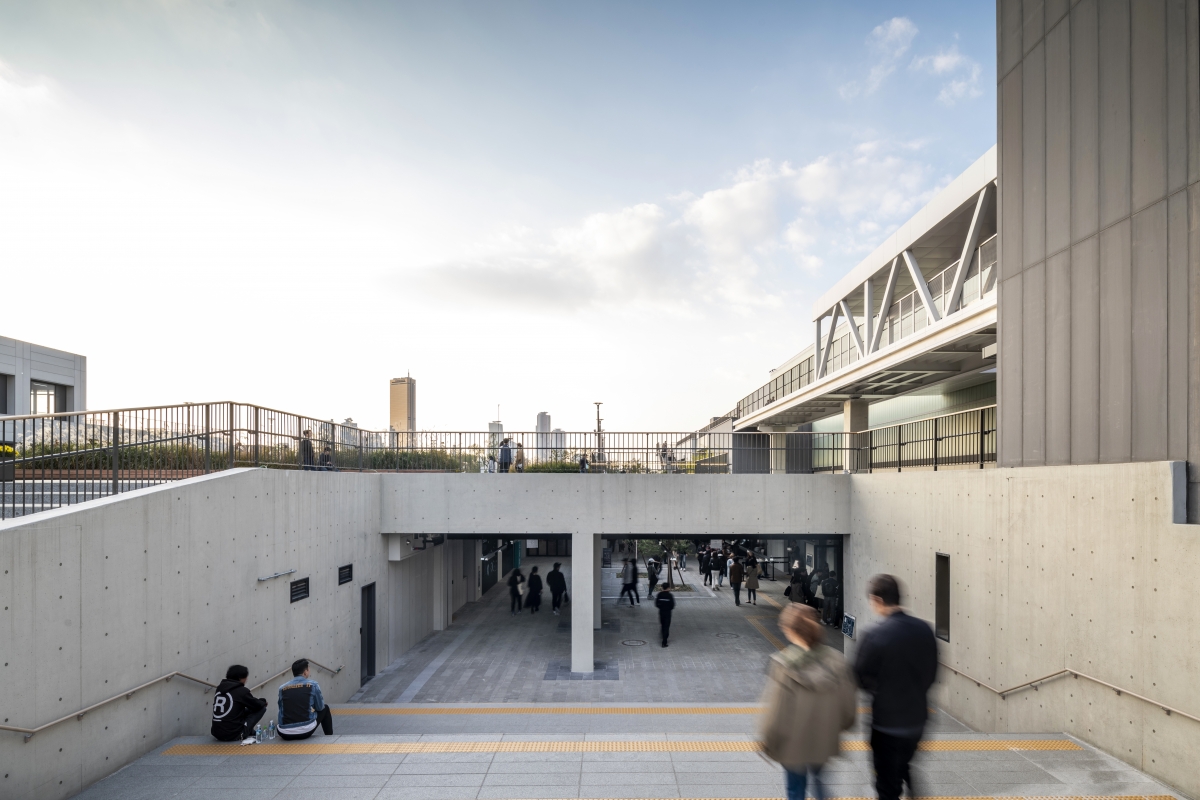
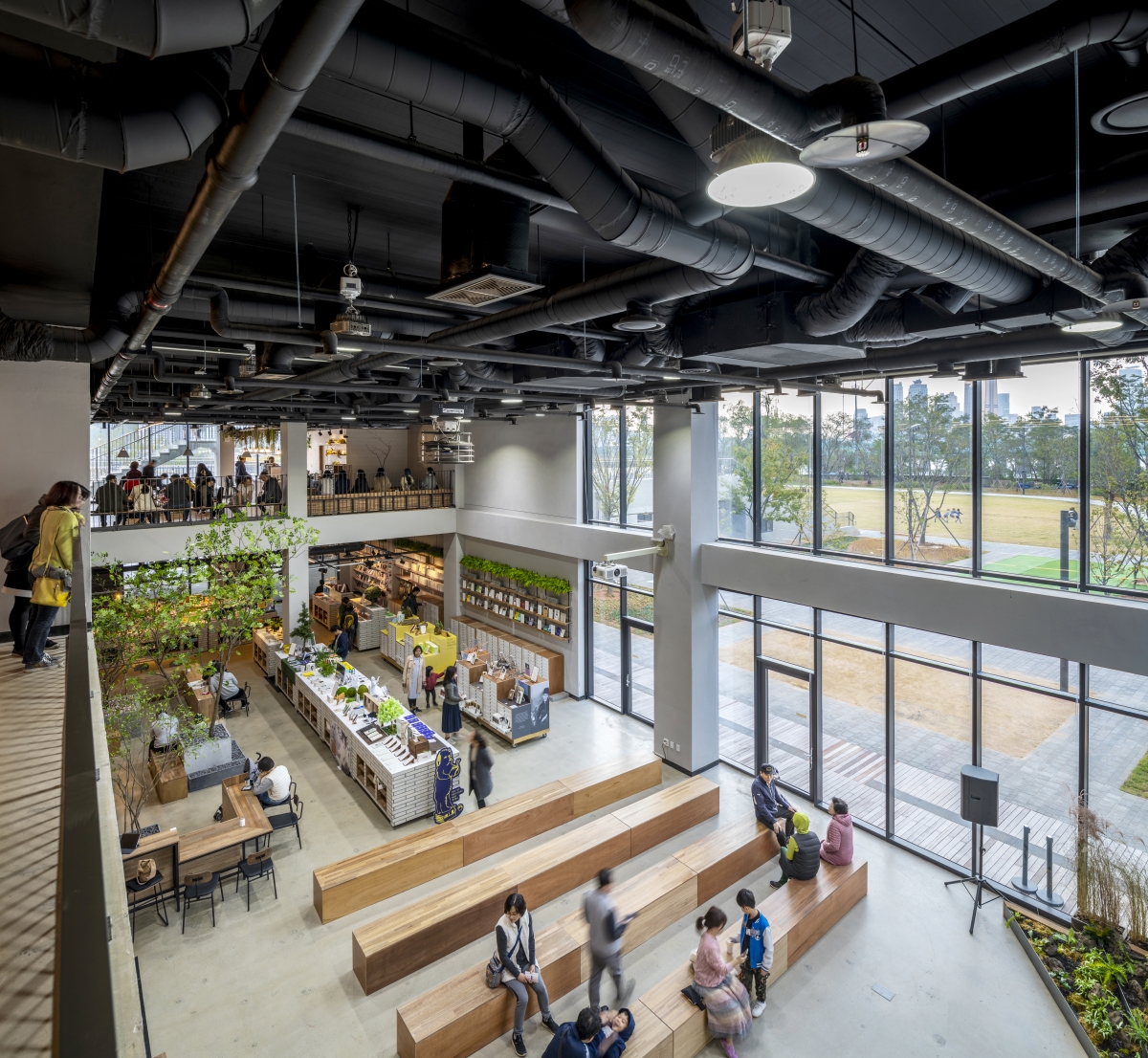
After the frame construction was completed, the operator was confirmed, and the plan was partially modified from the combination of small units to the displacement of large facilities.
Filling up the Island: As Space is Emptied, A Narrative is Filled
Island, nature, modular space, empty space that can be filled with anything; the work of filling such spaces with narratives and people is the mission of the ‘operator’. We think that the understanding of spatial characteristics and the preparations of a device that will maximise the value of a space are part of the journey that the operator takes to transform a space into a ‘place’.
A space filled with narratives and people provide an ‘experience’ for its visitors. By designing a ‘place’ as an experience, it goes beyond spatial design to include the discovery of appropriate content, the composition of a scene for the content to blend into space, the contemplation of the device to connect the spaces, contents, and people together, and moreover, the development of a systematic solution and management plan to make sure that this experience works in a sustainable way. This is what we see as ‘placemaking’, and as such an ‘operator’ of a place differs from a ‘manager’ of a facility. In the previous era of development, we were more familiar with playing the role of a facility manager than an operator. While it is true that keeping the facility safe and clean is part of any operation, there is also the more important aspect of allowing more people to communicate with the space through better use and coordination. To realise this, we became increasingly interested in appreciating ‘placemaking’ in its fullest sense. Furthermore, if it is about a public space, placemaking becomes even more crucial. As a public project, the process of reviving the value of the island and operating the facility, compared with that of a private project, it required a completely different approach.
Also, as public property, Nodeul Island must invite its tenants to abide by the ‘Public Property and Commodity Management Act’. The institutional frame of this law is typically the practice of selection based on the highest bidder, and this cannot but be an insurmountable wall to a participant who may have creativity but lack capital. Also, because the operator of Nodeul Island is officially an entrusted private party, the operating period is limited to three years according to the Ordinance on the Entrustment of Administrative Works to Private Sector. Furthermore, in the case of the Nodeul Island project, these three years are inclusive of the one year and three months of the preparatory period that the operator had to go through upon being selected as the private entrusted party. Because of this, the operation period after the opening of Nodeul Island is short. This can also become an obstacle in terms of gathering members to fill the island.
If it is difficult to change the established system and rules; the obstacle can only be overcome by employing the given system in the most effective way. Nodeul Island is currently being operated by a cooperative body composed of 34 companies and organisations, with Urban Transformer Consortium at the helm. Searching for team members who share a similar view of Nodeul Island while abiding by the high-bid selection system as a reference point, having the entrusted party directly compose the core spaces within Nodeul Island, maximising operation area, inviting creative individuals who lack capital via competitions, searching for society-friendly corporations to build social values together, and making use of rent reductions and related procedures within the public property act for such corporations to establish a shared playing field, are but some of the things that an operator who has gathered these people to build Nodeul Island should do – and were done – to provide for the island.
Nodeul Island Approached as a ‘Place’: The Significance of this Journey
When initiating something new, a ‘precedent’ plays a very significant role—Nodeul Island is a case in point. While the beginning and the aim of the Nodeul Dream Island competition was admirable, in reality it was held back by many obstacles. One then might wonder, if perhaps there was a precedent, overcoming these obstacles might have been easier. Also, this makes one think about what it means to be a precedent. We would like to find the future meaning and the role of Nodeul Island, especially from the expectation that it will become a reference point and provide inspiration for overcoming pre-existing conditions, frameworks and preconceptions. Going beyond the frame of physical construction in a spatial composition, the example of Nodeul Island also provides us with the opportunity to go deeper and reflect upon the system and the frame of the institutional system, as well as the social structure that grounds it. This is to say that a revolutionary spatial composition should be accompanied by contemplations on governance. What might have happened if the Nodeul Dream Island competition also marked the beginning of a kind of governance that differed from the current entrustment system to private sector? What if a new frame had been conceptualised to overcome the limits of the Public Property and Commodity Management Act in the process of filling Nodeul Island for a more creative placemaking? Although the Nodeul Dream Island competition fell short on both of these two fronts, it is hoped that Nodeul Island will function as the reference point for active consultation and debate for the ‘places’ to come.
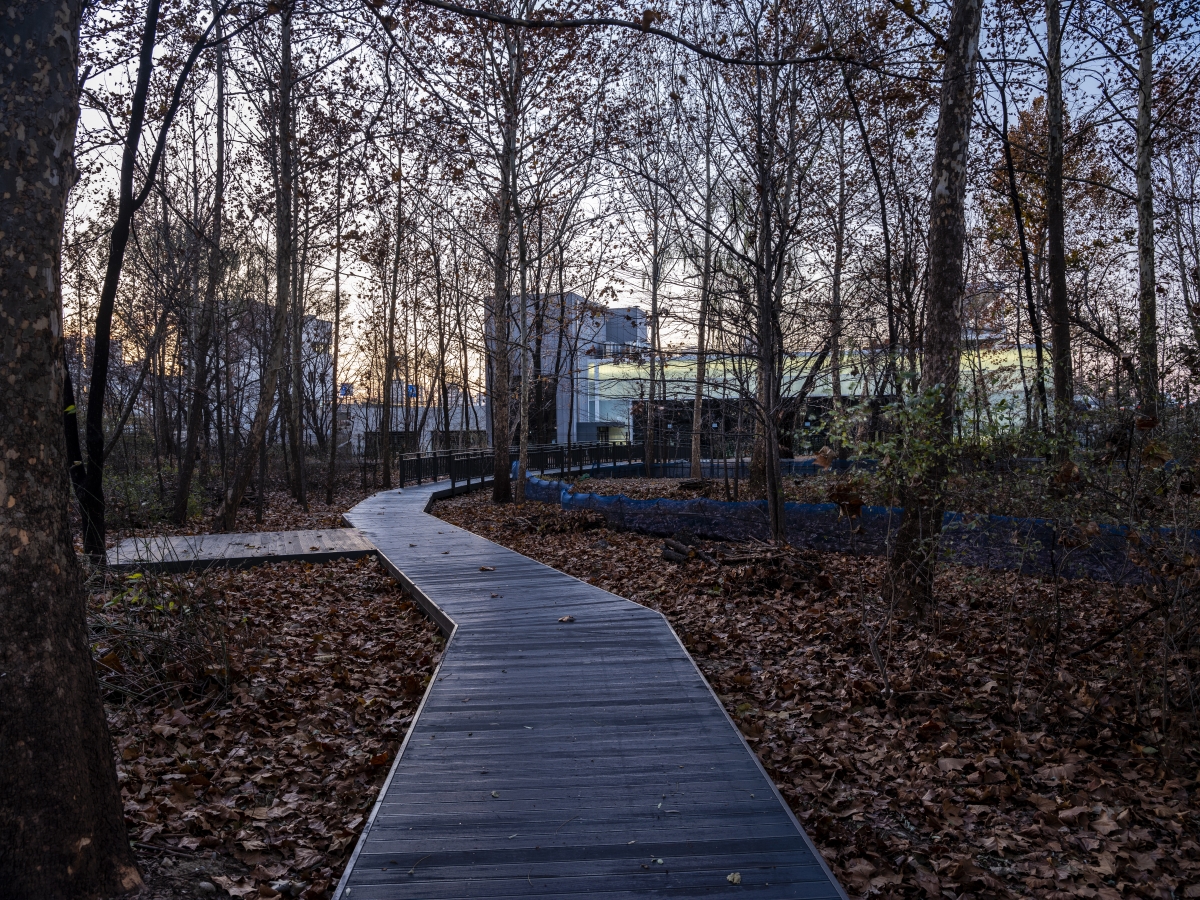
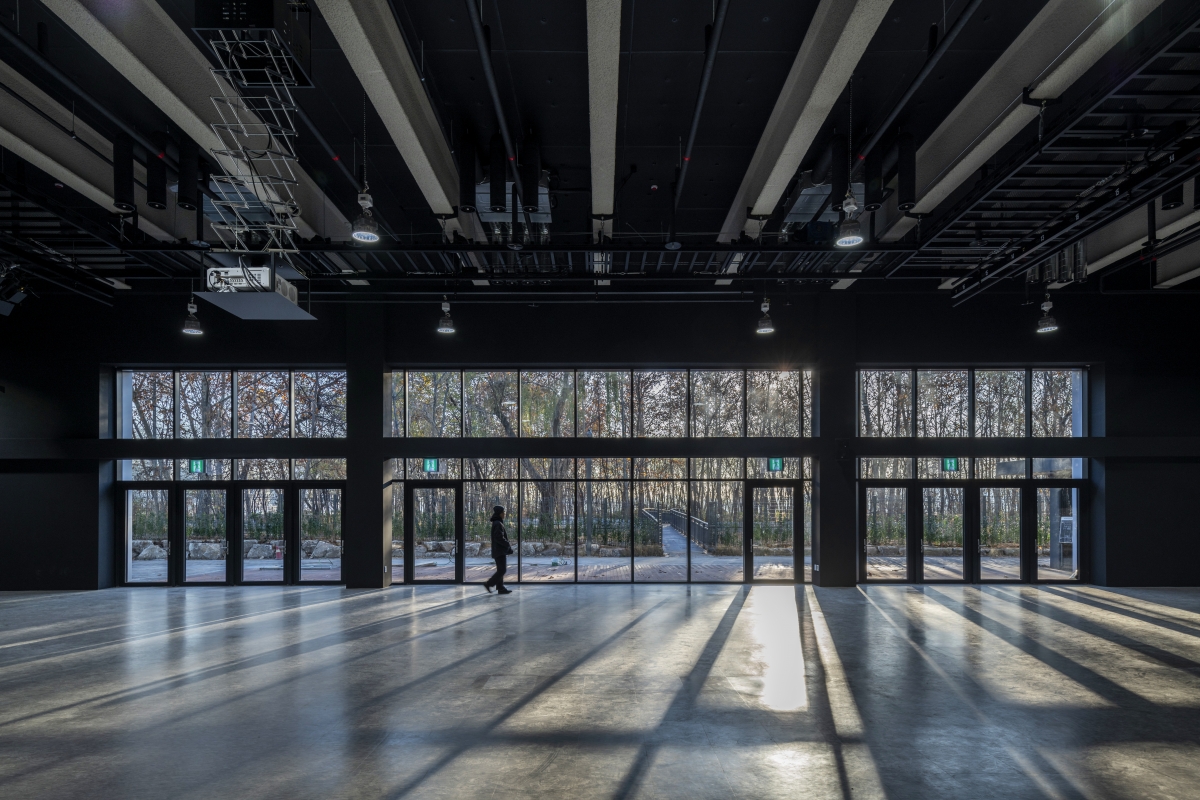
Multi-purpose facilities were positioned on the eastern side of Nodeul Island, and biotope was partially refurbished to become Nodeul Forest.
-
1. The official name of the Nodeul Island competition is the International Competition for Nodeul Dream Island. According to the organizers, the name ‘Nodeul Dream Island’ was picked to establish and realize the dream: that is, the locational significance of Nodeul Island and Han River as well as their value that citizens will be able to enjoy in the future. The competition was divided into ‘the Operation Concept Competition’ (1st phase), ‘the Operation Planning/Facility Concept Competition’ (2nd phase), and ‘the Space/Facility Construction International Competition’ (3rd phase) to meet its different aims. The ‘Nodeul Dream Island design competition’ mentioned in this text refers to the first two phase.





